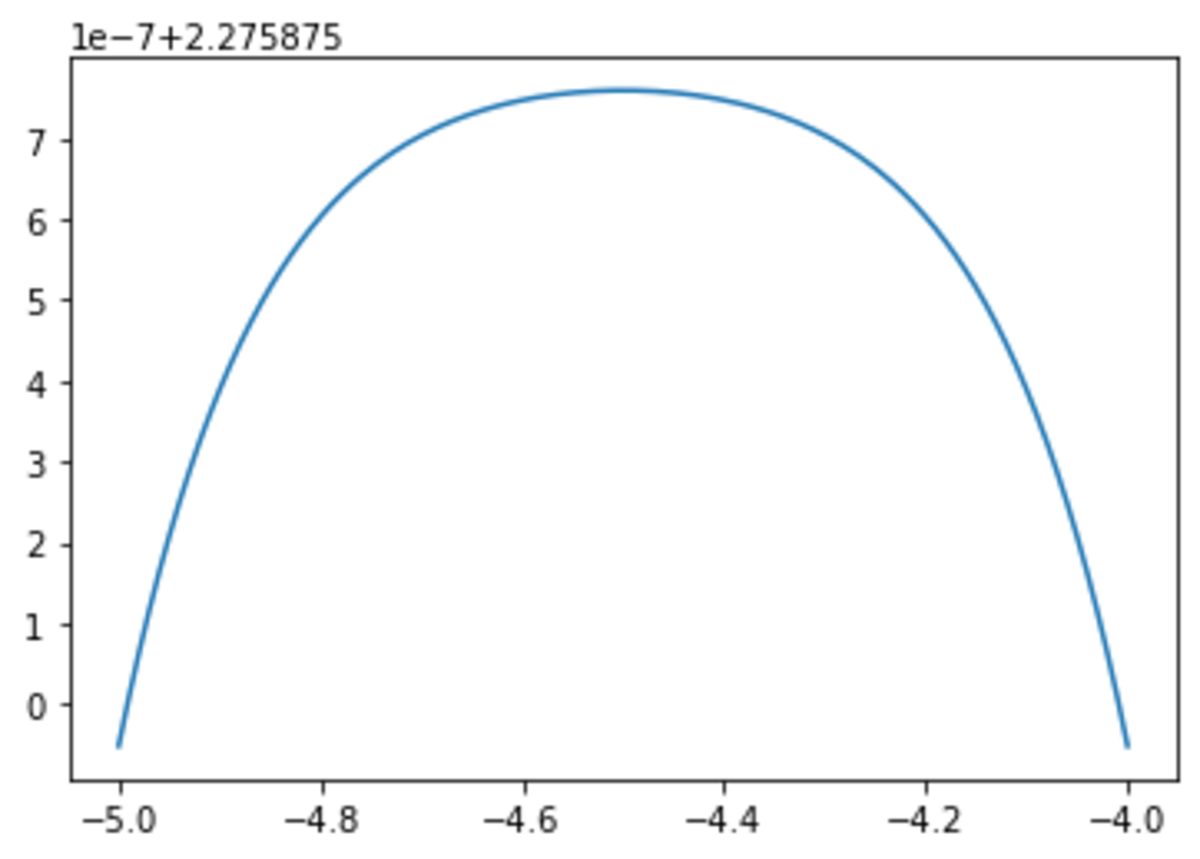Integral Maximized
Find the real number a such that the integral ∫ a a + 8 e − x e − x 2 d x attain its maximum.
The answer is -4.5.
This section requires Javascript.
You are seeing this because something didn't load right. We suggest you, (a) try
refreshing the page, (b) enabling javascript if it is disabled on your browser and,
finally, (c)
loading the
non-javascript version of this page
. We're sorry about the hassle.
2 solutions
Consider the function f : R → R defined by f ( a ) = ∫ a a + 8 e − x − x 2 d x ( a ∈ R ) . In order to maximize the function f we will find its critical points. By the Fundamental theorem of calculus function f is differentiable and f ′ ( a ) = e − ( a + 8 ) − ( a + 8 ) 2 − e − a − a 2 ( a ∈ R ) . Because the function R ∋ s → e s ∈ R is injective, we have that that f ′ ( a ) = 0 if and only if − ( a + 8 ) − ( a + 8 ) 2 = − a − a 2 , which can be rewritten as a = − 4 . 5 . Therefore a 0 = − 4 . 5 is a critical point of the function f .
Note, that the function R ∋ x → − x − x 2 ∈ R is bounded from above, therefore, the function f is bounded (we integrate over an interval of fixed length). Hence f attains its maximum. We have shown, that it has to attain it at a 0 = − 4 . 5 .
Side remark: on the plot below, you can see the graph of the function
f
on the interval
[
−
5
,
−
4
]
. Observe how
slight
the maximum of
f
is.

That's exactly how I did it
Let the integral be I . Then
I = ∫ a a + 8 e − x e − x 2 d x = ∫ a a + 8 e − ( x 2 + x ) d x = ∫ a a + 8 e 4 1 e − ( x + 2 1 ) 2 d x = 4 e ∫ a + 0 . 5 a + 8 . 5 e − u 2 d u Let u = x + 2 1
We note that the integrand f ( u ) = e − u 2 > 0 for all real u and it is an even function with maximum at u = 0 (see graph below.
To get the maximum value of integral or largest area under the curve, we position the interval [ a + 0 . 5 , a + 8 . 5 ] evenly into two halves with a + 0 . 5 = − 4 and a + 8 . 5 = 4 or a = − 4 . 5 .